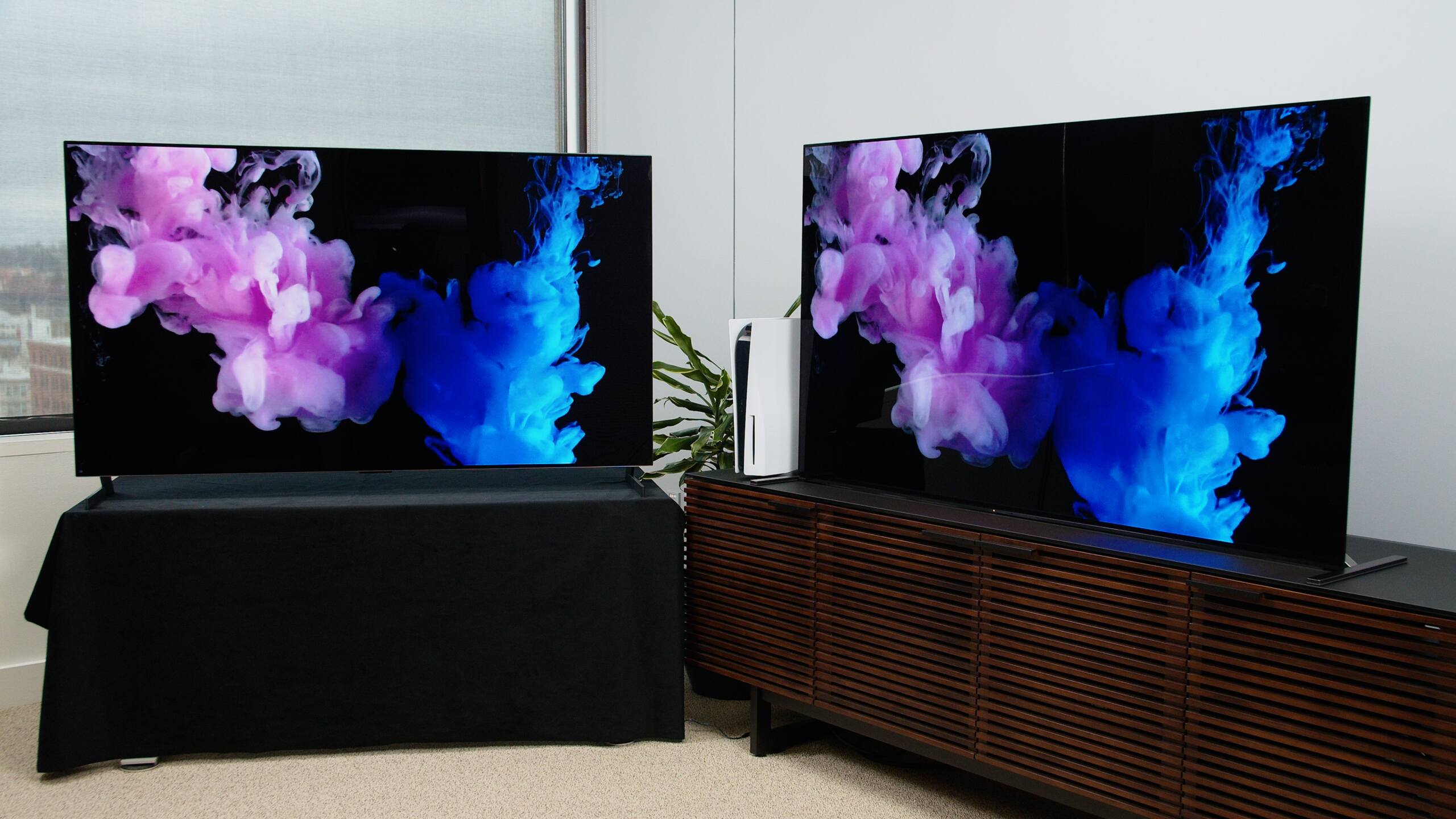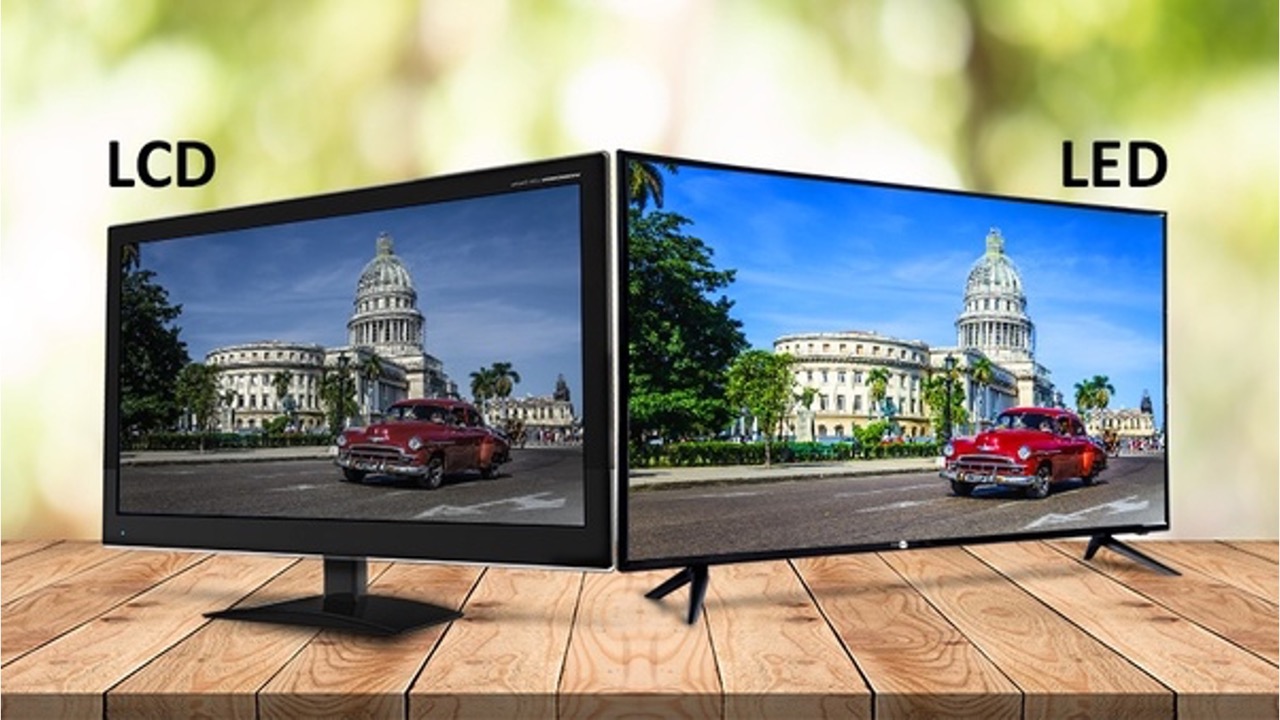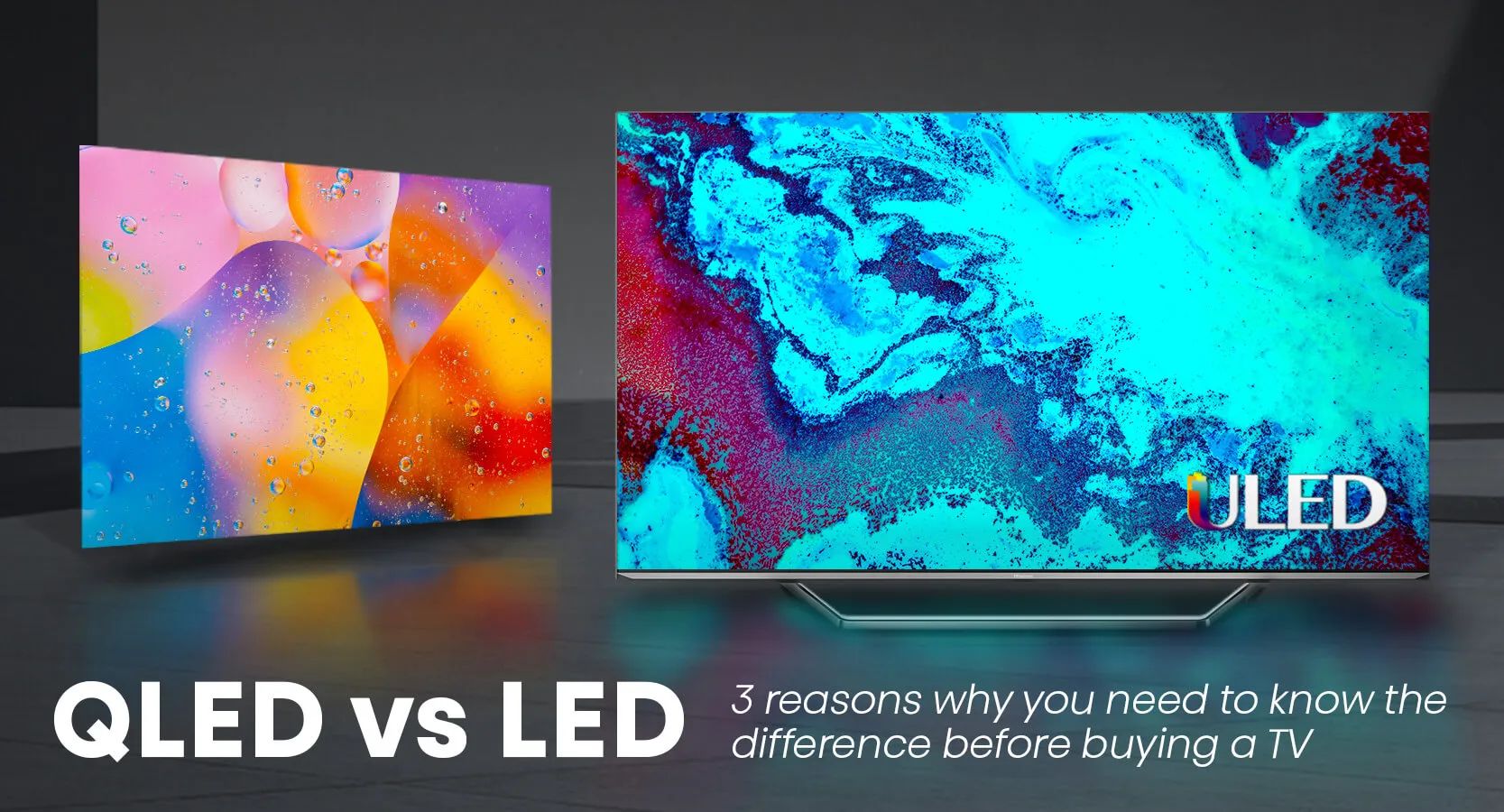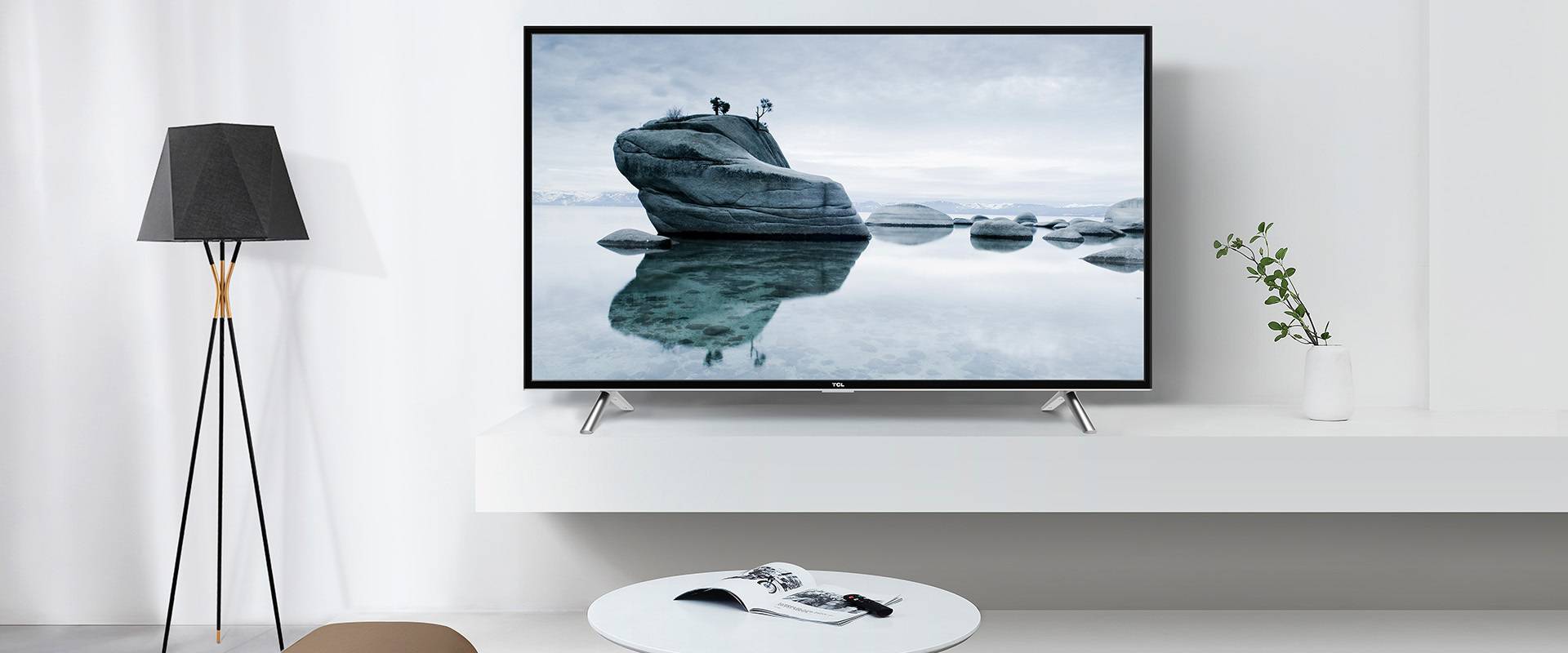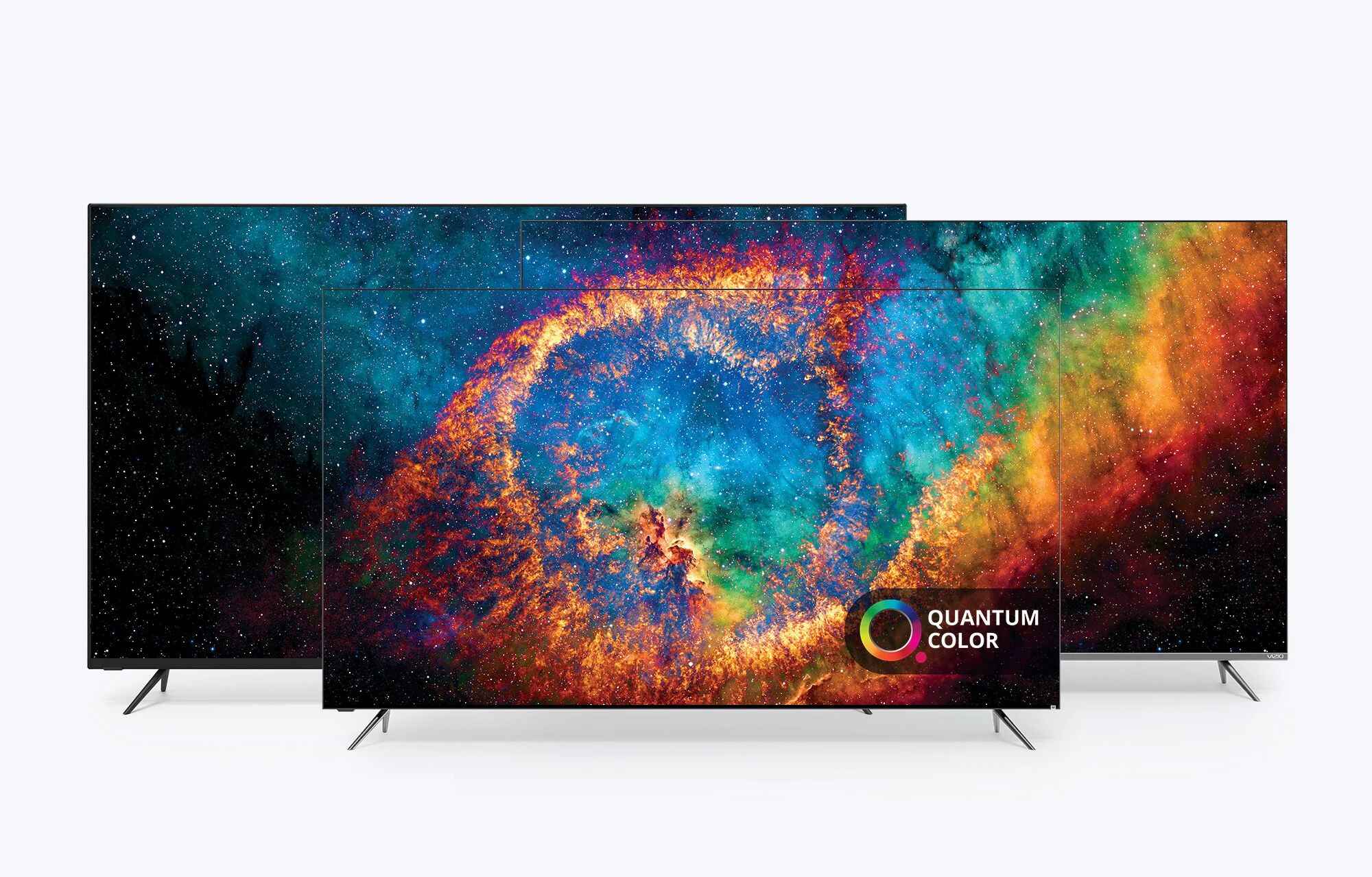Introduction
Welcome to the world of LED TVs, where stunning visuals and immersive experiences await. When it comes to choosing the perfect LED TV for your home entertainment setup, there are numerous factors to consider. One essential aspect that often goes unnoticed but plays a crucial role in picture quality is the contrast ratio.
Contrast ratio is a fundamental specification that determines the difference between the darkest blacks and the brightest whites displayed on your LED TV screen. It measures the range of luminance between the darkest and brightest parts of an image, allowing for more depth and realism in the visuals. A higher contrast ratio translates to a more dynamic and captivating viewing experience.
Understanding the importance of contrast ratio is key to making an informed decision when purchasing a new LED TV. A higher contrast ratio not only enhances the overall picture quality but also elevates the details and colors displayed on the screen, resulting in a more lifelike and engaging viewing experience.
But how is contrast ratio measured, and what types of contrast ratios should you consider? In this article, we will delve into the intricacies of contrast ratio, its significance in LED TVs, and the factors that can affect its performance. We will also provide you with tips on how to optimize the contrast ratio of your LED TV to ensure a superior visual experience.
So, if you’re ready to explore the fascinating world of contrast ratio in LED TVs, let’s dive in and unravel the secrets behind this essential feature!
What is contrast ratio?
Contrast ratio refers to the measurement of the difference between the darkest blacks and the brightest whites that a display device can produce. It quantifies the range of luminance levels and determines the ability of the display to display subtle details and reproduce realistic images.
In simpler terms, contrast ratio represents the ratio of the luminance of the brightest white to the luminance of the darkest black. A higher contrast ratio means that the display can produce deeper blacks and brighter whites, resulting in a more visually impactful and immersive experience.
Contrast ratio is expressed as a numerical value, such as 1000:1 or 5000:1. In these examples, the first number represents the luminance of the brightest white, and the second number represents the luminance of the darkest black. The larger the difference between these two values, the higher the contrast ratio.
Having a high contrast ratio is essential because it enhances the overall picture quality by increasing the perceived depth and detail in the displayed images. It helps in distinguishing between different shades of gray and improves the clarity and visibility of fine details, resulting in a more lifelike and engaging visual experience.
Without a sufficient contrast ratio, images on the screen may appear flat and lacking in depth. The details may blend together, making it difficult to discern subtle nuances and textures. On the other hand, a high contrast ratio ensures that both dark and bright scenes are accurately portrayed, offering a more dynamic and captivating viewing experience.
It is important to note that contrast ratio is just one aspect of picture quality, and a higher contrast ratio does not necessarily guarantee better overall image quality. Other factors such as color accuracy, brightness, and viewing angles also contribute to the overall visual performance of an LED TV.
Now that we have a better understanding of what contrast ratio is and its significance in display technology, let’s explore why it is crucial to consider contrast ratio when choosing an LED TV.
Importance of contrast ratio in LED TVs
The contrast ratio plays a vital role in determining the image quality and visual experience of an LED TV. It affects how details are portrayed, colors are rendered, and overall image depth is perceived. Let’s explore some of the key reasons why contrast ratio is important in LED TVs.
Enhanced Picture Quality: A high contrast ratio ensures that the blacks appear deep and rich, while the whites are vibrant and bright. This creates a stark contrast between different elements on the screen, allowing for better differentiation and improved clarity. The enhanced contrast ratio helps reveal intricate details in both dark and bright areas of the image, resulting in a more lifelike and immersive visual experience.
Improved Color Accuracy: Contrast ratio plays a significant role in determining the color accuracy of an LED TV. With a higher contrast ratio, colors appear more vibrant and true to life. The deep blacks and bright whites allow for a wider color gamut to be displayed, ensuring that colors are richly saturated and accurately reproduced. This brings images to life, making them more vivid and realistic.
Greater Depth and Dimension: A high contrast ratio adds depth and dimension to the visuals on your LED TV. It creates a sense of realism by emphasizing the differences in brightness levels between objects in the image. This depth perception contributes to a more immersive viewing experience, making you feel as if you’re part of the action on the screen.
Enhanced Detail Visibility: Contrast ratio greatly influences the visibility of fine details in a scene. A higher contrast ratio allows for better delineation of textures, subtle shades, and small details that might otherwise be lost in the darkness or brightness of the image. This level of detail visibility adds finesse to the displayed content, making it more engaging and captivating.
Better Viewing Experience: The overall impact of a high contrast ratio in an LED TV is a more enjoyable and immersive viewing experience. Whether you’re watching movies, playing games, or simply enjoying your favorite TV shows, a higher contrast ratio ensures that you can fully appreciate the beauty of the visuals. It creates a more dynamic and captivating display, drawing you into the content and enhancing your overall entertainment experience.
Considering the importance of contrast ratio in LED TVs, it is crucial to choose a TV with a high contrast ratio in order to enjoy the best possible picture quality. However, it is worth noting that the perceived quality of an LED TV also depends on other factors, such as the panel technology, brightness levels, and color reproduction capabilities.
Now that we understand the significance of contrast ratio in LED TVs, let’s delve into the various methods used to measure contrast ratio and the different types of contrast ratios found in the market.
How is contrast ratio measured?
Contrast ratio is measured by comparing the luminance of the brightest white to the luminance of the darkest black that an LED TV can produce. There are two main methods typically used to measure the contrast ratio: static contrast ratio and dynamic contrast ratio.
Static Contrast Ratio: The static contrast ratio, also known as native contrast ratio, measures the difference in luminance between the brightest white and the darkest black that can be displayed simultaneously on the screen. This measurement is taken with the backlight of the LED TV set to its maximum and minimum settings, respectively. For example, an LED TV with a static contrast ratio of 3000:1 means that the brightest whites are 3000 times brighter than the darkest blacks.
Dynamic Contrast Ratio: The dynamic contrast ratio measures the difference in luminance between the brightest white and the darkest black under dynamic conditions. In this case, the contrast ratio is not fixed but varies depending on the content being displayed. The LED TV dynamically adjusts its backlight levels to enhance contrast in different areas of the image. For instance, during dark scenes, the backlight is dimmed to produce deeper blacks, while it is brightened during bright scenes to achieve brighter whites. The dynamic contrast ratio is often higher than the static contrast ratio, as it can achieve deeper blacks and brighter whites by adjusting the backlight dynamically.
It is important to note that the static contrast ratio is considered more reliable and comparable between different brands and models, as it represents the maximum and minimum luminance values that can be achieved. On the other hand, dynamic contrast ratio tends to vary depending on the content being displayed and the TV’s image processing capabilities.
When comparing contrast ratios between different LED TVs, it is essential to consider their measurement methods. Some manufacturers may use inflated contrast ratio numbers in their marketing materials, especially for dynamic contrast ratios. It is advisable to rely on reputable sources and reviews to get a more accurate idea of the contrast ratio performance of a TV.
Now that we have covered the measurement methods used for contrast ratio, let’s explore the different types of contrast ratios you may come across when researching LED TVs.
Understanding the different types of contrast ratio
When researching LED TVs, you may come across different types of contrast ratios. These variations can cause confusion, so let’s take a closer look at the different types of contrast ratios and what they mean.
Native Contrast Ratio: The native contrast ratio, also known as the static contrast ratio, is the most commonly referenced type of contrast ratio. It measures the difference in luminance between the brightest white and the darkest black that an LED TV can produce simultaneously. A higher native contrast ratio indicates a greater ability to display deep blacks and bright whites, resulting in a more vivid and realistic image.
Dynamic Contrast Ratio: The dynamic contrast ratio measures the difference in luminance between the brightest white and the darkest black under dynamic conditions. This type of contrast ratio takes into account the LED TV’s ability to adjust its backlight dynamically based on the content being displayed. The dynamic contrast ratio can provide enhanced contrast in different areas of the image, resulting in deeper blacks and brighter whites. However, it’s important to note that dynamic contrast ratios can vary depending on the TV’s image processing capabilities and the content being viewed.
Sequential Contrast Ratio: The sequential contrast ratio measures the difference in luminance between two consecutive images. It evaluates the LED TV’s ability to display subtle differences in brightness levels between frames. This contrast ratio is commonly used in professional applications such as video editing or graphics design. A higher sequential contrast ratio ensures smoother transitions and better image quality.
Full-On/Off Contrast Ratio: The full-on/off contrast ratio measures the difference in luminance between the LED TV when displaying an all-white screen (full-on) and when turned off (full-off). It represents the maximum potential contrast that the TV can achieve. However, it may not accurately reflect the contrast experienced during normal viewing conditions, as the TV’s backlight is typically adjusted dynamically based on the content being displayed.
It’s essential to understand these different types of contrast ratios and their implications. The native contrast ratio is often considered the most reliable and relevant for comparing LED TVs’ picture quality. However, it’s worth noting that the perceived contrast performance also depends on other factors such as panel technology, backlighting methods, and image processing capabilities.
Now that we have explored the various types of contrast ratios, let’s move on to the next section, where we will discuss how to choose the right contrast ratio for your TV.
Choosing the right contrast ratio for your TV
When selecting an LED TV, considering the contrast ratio is crucial to ensure optimal picture quality and a satisfying viewing experience. Here are some factors to keep in mind when choosing the right contrast ratio for your TV.
Adequate Contrast Performance: While a higher contrast ratio is generally desirable, it’s important to choose a TV with a contrast ratio that provides adequate performance for your viewing needs. Consider the typical content you watch and the lighting conditions in your viewing environment. If you primarily watch movies with dark scenes, a TV with a higher contrast ratio would deliver better shadow details and deeper blacks. However, for a brightly lit room or primarily watching bright content, a slightly lower contrast ratio may still provide satisfactory results.
Panel Technology: Different panel technologies, such as LCD or OLED, have varying contrast ratio capabilities. OLED panels, for example, offer exceptional contrast ratios with deep blacks and infinite contrast due to their pixel-level control of illumination. LCD panels, on the other hand, may have lower native contrast ratios but can still achieve acceptable picture quality with proper backlighting and image processing techniques.
Consider Other Picture Quality Factors: While contrast ratio is essential, it should not be the sole determining factor in your TV selection. Consider other picture quality aspects, such as color accuracy, brightness levels, viewing angles, and motion handling. A balance between all these factors is crucial for an enjoyable and immersive viewing experience.
Read Reviews and Test In-store: To get a better understanding of how a specific TV performs in terms of contrast ratio, it’s recommended to read reviews from reputable sources. These reviews often provide detailed insights into the performance of different TVs in various scenarios. If possible, visiting a store to see the TV in person and evaluate its picture quality can also be helpful in making an informed decision.
Budget Considerations: Keep in mind that TVs with higher contrast ratios tend to be more expensive. Consider your budget and determine the level of picture quality you are comfortable with. While a higher contrast ratio can provide better picture quality, it may not always be necessary depending on your specific needs and preferences.
By taking these factors into account, you can select a TV with a contrast ratio that suits your viewing requirements and provides an enjoyable visual experience.
Now that we have discussed how to choose the right contrast ratio for your TV, let’s explore some factors that can affect the contrast ratio performance of LED TVs.
Factors that can affect contrast ratio
While contrast ratio is an inherent characteristic of LED TVs, several factors can impact its performance. It’s important to understand these factors to make informed decisions about your display device. Let’s explore some key factors that can affect the contrast ratio of LED TVs.
Backlighting Technology: The backlighting technology used in LED TVs plays a significant role in contrast ratio performance. Different backlighting methods, such as edge-lit and direct-lit, can impact the uniformity and control of brightness across the screen. Direct-lit LED TVs generally offer better contrast ratios, as they provide more precise control of backlight zones and can achieve deeper blacks.
Local Dimming: Local dimming is a feature available in some LED TVs that dynamically adjust the backlight brightness in specific areas of the screen. This feature enhances the contrast ratio by dimming the backlight in dark areas, resulting in deeper blacks and improved shadow detail. TVs with local dimming capabilities tend to have better contrast ratios, but the effectiveness of local dimming implementation varies across different models and brands.
Reflections and Ambient Lighting: The presence of reflections and ambient lighting in the viewing environment can affect the perceived contrast ratio of an LED TV. Glare from windows or bright lights can reduce the impact of deep blacks and make the image appear washed out. It is advisable to consider the lighting conditions in your room and minimize external light sources to maximize the perceived contrast ratio of your TV.
Image Processing: The image processing capabilities of an LED TV can impact the contrast ratio performance. Advanced image processing technologies, such as dynamic contrast enhancement or local contrast enhancement, can improve the perceived contrast ratio by optimizing the brightness and contrast of specific areas of the image. However, these enhancements may vary in effectiveness depending on the TV model and the content being displayed.
Viewing Angle: LED TVs can experience a reduction in contrast ratio when viewed from off-axis angles. The colors and brightness levels may appear less vibrant, and blacks may appear grayer. In-plane switching (IPS) panels are known for providing better viewing angles but may have lower native contrast ratios compared to twisted nematic (TN) panels.
Screen Uniformity: Uniformity issues, such as backlight bleeding or clouding, can impact the perceived contrast ratio of an LED TV. These issues can result in uneven backlighting and affect the display of deep blacks, especially in dark scenes. Checking for screen uniformity during the TV selection process and ensuring any defects are within acceptable limits can help maintain a satisfactory contrast ratio.
By understanding these various factors that can affect the contrast ratio of LED TVs, you can make informed decisions when choosing a TV that meets your specific needs and viewing conditions.
Now that we have explored the factors that can impact contrast ratio, let’s move on to the next section, where we will provide tips for optimizing the contrast ratio on your LED TV.
Tips for optimizing contrast ratio on your LED TV
To ensure the best possible picture quality and maximize the contrast ratio on your LED TV, consider implementing the following tips and techniques:
1. Adjust Picture Settings: Explore the picture settings on your LED TV and make adjustments to optimize the contrast ratio. Start by setting the backlight level to an appropriate level, avoiding extreme settings that can wash out blacks or create blooming. Adjust the contrast and brightness settings to strike a balance that brings out details in both bright and dark scenes.
2. Disable Unnecessary Image Enhancements: Many LED TVs come with various image enhancement features, such as dynamic contrast or dynamic backlight control. While these features may enhance certain aspects of the image, they can also interfere with the true contrast ratio by artificially boosting or dimming certain areas. Consider disabling these features or adjusting them conservatively to maintain a more accurate contrast ratio.
3. Calibrate Your TV: Professional calibration can significantly improve the overall picture quality and optimize the contrast ratio of your LED TV. Hiring a professional calibrator or using calibration tools can help fine-tune the settings to achieve accurate colors, improved contrast, and better overall image quality.
4. Control Ambient Lighting: Minimize the impact of ambient lighting on your LED TV by properly controlling the lighting conditions in your viewing environment. Reduce glare by using curtains or blinds to block out excessive external light sources. Consider using bias lighting behind the TV to create a more balanced viewing experience and reduce eye strain.
5. Avoid Extreme Viewing Angles: LED TVs can experience a reduction in contrast when viewed from extreme angles. Sit directly in front of the TV and ensure the screen is at eye level for the best contrast ratio performance. If you have a wide seating arrangement, consider investing in a TV with good off-axis viewing angles or adjust the room layout accordingly.
6. Keep the Screen Clean: Regularly clean the screen of your LED TV to remove dust, smudges, and fingerprints. A dirty screen can scatter light and affect contrast, making the image appear less vibrant. Use a soft microfiber cloth and a gentle, screen-safe cleaner to maintain optimal picture quality.
7. Update Firmware and Adjust Settings: Ensure that your LED TV’s firmware is up to date, as manufacturers frequently release updates that address performance issues and enhance picture quality. Additionally, periodically revisit the picture settings and make adjustments based on changes in the viewing environment or personal preferences.
By following these tips, you can optimize the contrast ratio on your LED TV and enjoy a visually stunning and immersive viewing experience.
Now that we have explored the techniques for optimizing contrast ratio, let’s conclude our discussion on the significance of contrast ratio in LED TVs.
Conclusion
Contrast ratio is a fundamental aspect of LED TVs that significantly impacts picture quality and the overall viewing experience. It measures the difference between the darkest blacks and the brightest whites that a TV can produce, determining the depth, detail, and realism of the displayed images. A higher contrast ratio leads to enhanced picture quality, improved color accuracy, and a more immersive visual experience.
Understanding the different types of contrast ratio, such as native contrast ratio and dynamic contrast ratio, is crucial when selecting an LED TV. It’s important to choose a contrast ratio that suits your viewing needs, considering factors like content preferences, room lighting conditions, and budget constraints.
While contrast ratio is a key specification, other factors such as panel technology, backlighting methods, image processing capabilities, and viewing angles also contribute to the overall picture quality of an LED TV. It’s essential to strike a balance between all these factors to achieve the best possible visual performance.
By following tips for optimizing contrast ratio, such as adjusting picture settings, calibrating your TV, controlling ambient lighting, and keeping the screen clean, you can maximize the contrast ratio of your LED TV and enjoy a visually stunning and immersive viewing experience.
When choosing an LED TV, it’s important to consider reputable sources, read reviews, and test the TV in person to get a better understanding of its contrast ratio performance and overall picture quality. This will enable you to make an informed decision and select a TV that meets your specific needs and provides the best possible picture quality.
In conclusion, understanding and considering the contrast ratio is essential for choosing an LED TV that delivers exceptional visual performance, immerses you in stunning images, and enhances your overall entertainment experience.










